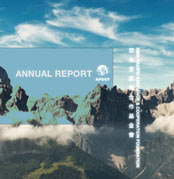Date: 5 October, 2010
Sin Chew Jit Poh: “New Asian Strategy” Creating a New Asian-Pacific Model
The Asia Pacific Exchange & Cooperation Foundation released the “New Asian Strategy” a few days ago. It stresses the establishment of a “New Asian Think Tank” to gather social elites worldwide for the creation of the “Asian-Pacific Model”. Also, the representatives participating in the Kuala Lumpur Conference are fully aware of the trend of economic globalization. Therefore, countries in the Asian-Pacific Region should jointly promote free trade and economic cooperation.
The New Asian Strategy of the Asia Pacific Exchange & Cooperation Foundation reaffirms the status of Asia in the world economy. 400 million Asians enjoy an average disposable income that is comparable to peoples’ income in EU countries and the United States. The economic potential of ASEAN, in particular, is not negligible. The Wall Street Journal of Asia reported the other day that ASEAN is expected to become the largest export market to the United States in the next five years. The US government has shifted its attention in Asia from Japan and China to ASEAN. According to data from the US Department of Commerce, the amount exported from the United States to the ten ASEAN countries last year was close to USD 42 billion. While the export amount to China and India was only USD 12 billion and USD 4 billion respectively. The procurement projects raised by the governments of ASEAN countries, such as energy, telecommunication, transportation equipment, and service projects, are projects in which US enterprises are good at. Therefore, it can be predicted that exports to ASEAN from the US will far exceed the total of US export to China and India.
Therefore, it is of special significance for the Asia Pacific Exchange & Cooperation Foundation to put forward the New Asian Strategy at this moment. It proposes the establishment of a new think tank under the Asian-Pacific Model, and the foundation of a developmental model that is fit for the East. However, from the perspective of Asian countries such as China and Malaysia, we wish that the platform of Foundation Asia would promote regional and world charity and public welfare. We wish it will transmit the “power of love” among various Asian countries under hardship, and express Asians’ responsibility to the world. Also, it naturally brings in European forces to balance US pressure. Regardless of whether or not the strategy of balancing the US and Europe can succeed, Asian countries have, in the course of actively promoting the Asia Pacific Exchange & Cooperation Foundation, demonstrated self-affirmation and confidence. This confidence, along with economic development, has undoubtedly enabled Asian countries to play a more important role in regional order and obtain more self-determination.
For Malaysia, this brand new situation will likely bring new opportunities, as well as challenges confronting the new order. Therefore, we should first build up our strength and think calmly. At a time when a new political, economic, and trade order is gradually taking shape in the Asia-Pacific region, how should we participate? On what strengths are we able to participate? Only when we are well prepared can we grasp the most appropriate opportunity and find the most appropriate angle to participate, instead of letting this historical opportunity pass by.
As far as strength-building is concerned, the top priority is continually maintaining our economic competitiveness. The Asia-Pacific region holds sway in the world because of its economic power, while China and other Southeast Asian countries are especially formidable in their economic development. Recently, Malaysia seems to lack strength in further economic development. Therefore, how can Malaysia strengthen its investment environment? How can we enhance the competitiveness of our products and maintain our economic growth rate? These have become the most important tasks at present. At the same time, we must actively reorganize the research teams of various countries in the Asia-Pacific region, consolidate scholars engaged in Asian-Pacific research, and even organize transnational research groups to divide the work of Asia-Pacific research in an attempt to consolidate the new Asian think tank of the foundation. If such economic and academic preparatory work is not well done, all conceptions of an Asia-Pacific model will be empty talk.
Furthermore, in terms of strategy design, the increasing importance of the Asia-Pacific region demonstrates that the overall direction of the Asia Pacific Exchange & Cooperation Foundation is not wrong. But more important in the future will be how to balance the East and West, and how to borrow and use the strengths in European and American trade competition. When the United States starts to shift its attention in Asia from China and Japan to the ASEAN, the Asia Pacific Exchange & Cooperation Foundation should also make an overall review of its economic layout according to this trend. The Asia Pacific Exchange & Cooperation Foundation does not have to follow the footsteps of the United States and other countries, but should always strive to seek its own maximum interest amidst the changing international environment.


 Back
Back